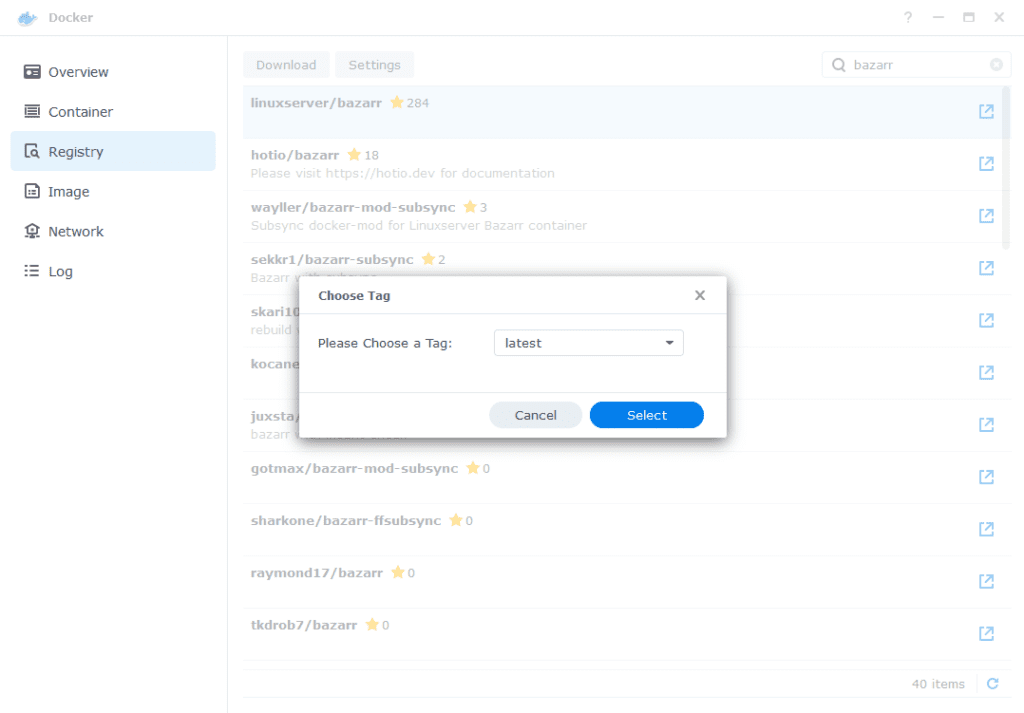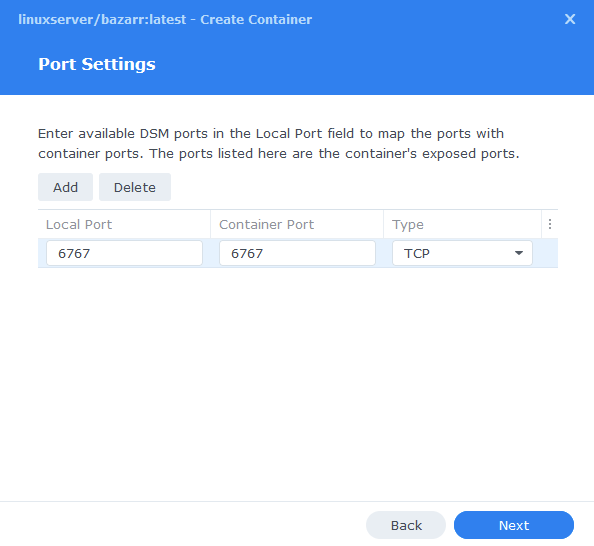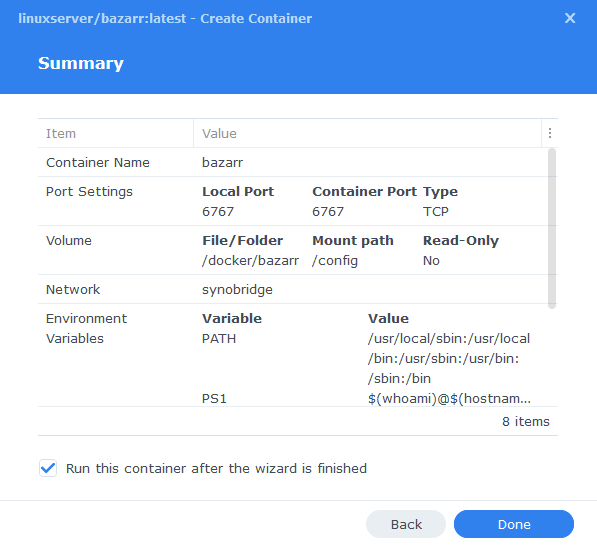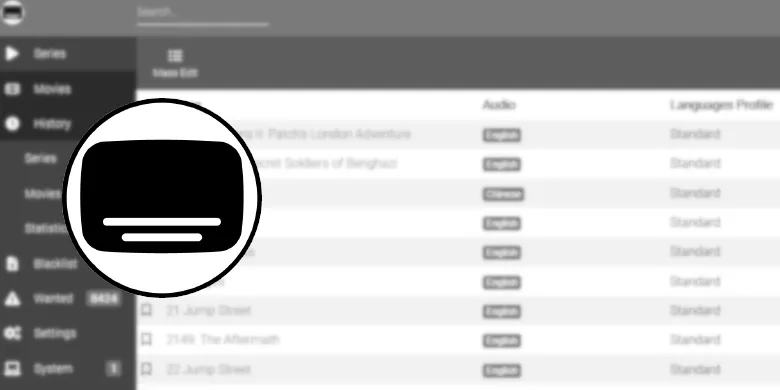Last updated on 6 April 2025
Please note if you are using DSM7.2 or higher you should use the Container Manager version of this guide from the menu.
This guide has reached the end of its updates as most people are now on the latest DSM update - This guide is correct as of 08/12/2023 however no further updates will be added.
| Update | Date |
|---|---|
| Removed docker compose section as rarely used | 18/07/2023 |
What is Bazarr?
Bazarr links to your Radarr and Sonarr setups and will automatically find and download matching subtitles for your media, this is useful if you are looking for an alternative language or when subs were not included with the original file.
Let’s Begin
In this guide I will take you through the steps to get Bazarr up and running in Docker.
In order for you to successfully use this guide please complete the setting up a docker user guide, or have your ID details to hand.
Downloading the Bazarr Image
Open up Docker within DSM and navigate to the ‘Registry’ tab and search for ‘Bazarr’.
In the list of available containers select the one made by Linuxserver as shown below, right click on it and select ‘Download’ or click the button at the top of the window.

When the dialogue pops up asking you to choose a version, make sure you choose ‘Latest’ from the list.

You can check the status of the download over on the ‘Image’ tab.
Setting up the container
In Docker click on the ‘Image’ tab, in the list of your containers select the ‘Linuxserver Bazarr’ image and click on ‘Launch’
You will be greeted with the Network screen, we will be using the ‘synobridge’ network we created earlier select it from the list and click Next.

General Settings
Next you will be greeted with the General Settings screen, this is where you can start specifying some of your preferences.
You can change the name of the container to anything you like, and you may want to enable Auto Restart as this will ensure Bazarr starts automatically if you reboot your NAS.
You will also notice a Configure capabilities button — don’t change anything in here!

Next up we are going to click on the ‘Advanced Settings’ button, this will take you to a new window with a number of tabs which we are going to work through.
Environment (PGID, PUID and Timezone)
Next we are going to set up a couple of environment variables that docker will use to allow the container access to our files and folders and also to tell it where we live in the world.
Click the Add button, and fill in the following details as per the table/screenshot, you will need to do one at a time.
| Variable | Value |
|---|---|
| PUID | The UID you obtained in the user setup guide |
| PGID | The GID you obtained in the user setup guide |
| TZ | Your timezone wikipedia.org/wiki/List_of_tz_database_time_zones |

Links/Execution Commands
You do not need to set up anything on these tabs.
Press ‘Save’ to go back to the initial setup screen, then press ‘Next’
Port Settings
We won’t be changing any of the ports the container uses. You can repeat the ones shown on the right side of the settings page ‘Container Port’ onto the left side ‘Local Port’ once you have done this press ‘Next’.

Volume Settings
We will now be specifying the directories where Bazarr will store its configuration files and where to find our media.
Click on Add Folder, click on the docker share and create a new sub-folder called ‘bazarr’ select this folder and click ‘select’

Now add ‘/config’ to the ‘Mount path’ box
Click Add Folder again and this time select the top level ‘data’ share and click Select.
You will now enter ‘/data’ into the ‘Mount path’ box
Your path settings should now look like the table/screenshot below.
| File/Folder | Mount path |
|---|---|
| docker/bazarr | /config |
| data | /data |

Click Next to move to the final screen.
Summary
You have now completed the setup of the container.
You will be shown an overall summary of the settings we have specified, this is a good time to double-check everything is correct. Finally, click on Done and the container should start to boot.

You should now be able to access Bazarr via the IP of your NAS followed by the port 6767
e.g. 192.168.0.40:6767
| Historic Updates | Date |
|---|---|
| New guide published | 13/02/2022 |
| Updated with DSM7.1 Steps and Screenshots | 21/06/2022 |
| Added new port settings and Docker Bridge Network | 23/07/2022 |
| Compose version number removed and small wording amendments | 09/04/2023 |
| Amended the path to save the compose file – this is for security, so the container has no access to the file contents. | 14/04/2023 |
Looking for some help, join our Discord community
If you are struggling with any steps in the guides or looking to branch out into other containers join our Discord community!
Buy me a beverage!
If you have found my site useful please consider pinging me a tip as it helps cover the cost of running things or just lets me stay hydrated. Plus 10% goes to the devs of the apps I do guides for every year.




Hi, appreciate the guide, very useful. How could I add multiple /data paths, I have two mounts and Docker isn’t letting me add two paths with the /data variable.
Hey, you need to give the second mount a different name you cant add two to the same one e.g. /data2
Hi,
Thanks a lot for this guide 🙂
When setting up the Environment, DSM notified me that the “TZ” variable was already set, and it was, with the Etc/Utc value. I changed it to what you propose.
Also, the UI on my DSM 7.1 is not quite the same as what you display in your screenshots : you are not greeted by the “Network” screen but by a “General parameters” screen (not sure how it is exactly named in english), and all the settings you mention are located in tabs displayed after clicking on a “Advanced parameters” button. Either way it works perfectly.
Oh right, are you on DSM6
I am not, however I made a mistake and assumed I had the latest version of DSM 7 as I updated it yesterday (from 6), I have DSM 7.0.1, and not DSM 7.1.1. So I presume the difference is there 🙂 Will check.